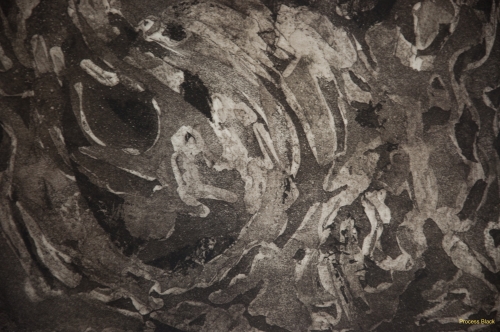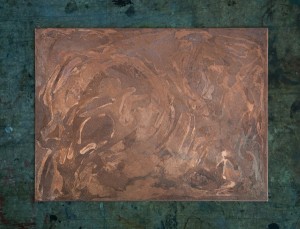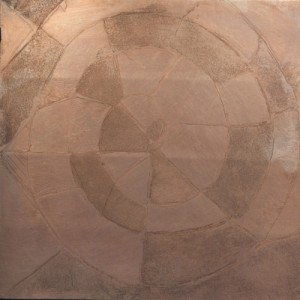 How to fully document the process became a priority for the success of my Color Investigation in Intaglio. Even when I thought I was being diligent I ended up neglecting some data that I missed to reconstruct the etching stages. When working with multiple plates it is crucial to make accurate annotations on the ink used, paper and press calibration.
How to fully document the process became a priority for the success of my Color Investigation in Intaglio. Even when I thought I was being diligent I ended up neglecting some data that I missed to reconstruct the etching stages. When working with multiple plates it is crucial to make accurate annotations on the ink used, paper and press calibration.
This investigation with the blacks was great to adjust the eyes to the perception of minor differences on tone and light. The lighting and how tired the eyes are can determine if I correctly can identify each of the six (6) blacks. While the differences can be small the impact on the composition is major, creating variety and extra interest.
Try to identify the different blacks and to notice what makes each unique. The inks are not alike to work with. If working in Intaglio, avoid Block Black: it is a killer! Block Black gets stuck to the plate and it takes lots of wiping to even it up. Vine has its rich pigment. I was surprised how I badly can notice the differences between Bone Black and Blue Black. However, when the early morning lights were shinning on the print and my eyes were relaxed, the blue hue of this black was very visible.

For sure, this is not a project to rush through. Lots of learning is coming from observing the results achieved from applying either rosin or spray in the aquatint process. It directly affects the pigmentation, creating very particular textures. The lines created by applying the Sugar Lift were magnified on photographs. Sugar Lift gives a ‘poetic feeling’ to the plate that translates so well on the print.
Tomorrow I will start working on the Reds using the same plates. All together there are twenty one inks! So far I have been working only with six blacks. As above mentioned, this is not a project to be rushed through.

